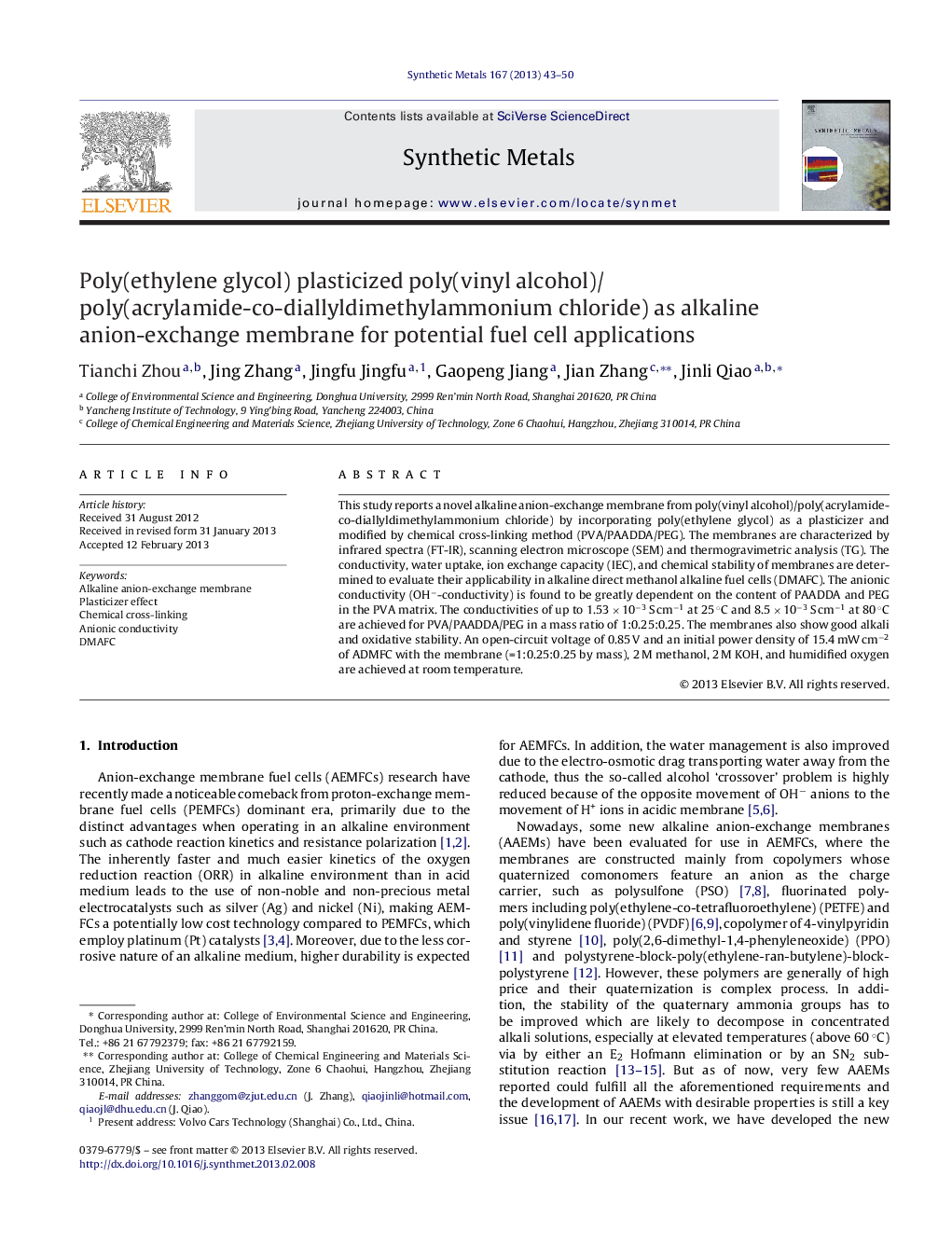| Article ID | Journal | Published Year | Pages | File Type |
|---|---|---|---|---|
| 1441515 | Synthetic Metals | 2013 | 8 Pages |
This study reports a novel alkaline anion-exchange membrane from poly(vinyl alcohol)/poly(acrylamide-co-diallyldimethylammonium chloride) by incorporating poly(ethylene glycol) as a plasticizer and modified by chemical cross-linking method (PVA/PAADDA/PEG). The membranes are characterized by infrared spectra (FT-IR), scanning electron microscope (SEM) and thermogravimetric analysis (TG). The conductivity, water uptake, ion exchange capacity (IEC), and chemical stability of membranes are determined to evaluate their applicability in alkaline direct methanol alkaline fuel cells (DMAFC). The anionic conductivity (OH−-conductivity) is found to be greatly dependent on the content of PAADDA and PEG in the PVA matrix. The conductivities of up to 1.53 × 10−3 S cm−1 at 25 °C and 8.5 × 10−3 S cm−1 at 80 °C are achieved for PVA/PAADDA/PEG in a mass ratio of 1:0.25:0.25. The membranes also show good alkali and oxidative stability. An open-circuit voltage of 0.85 V and an initial power density of 15.4 mW cm−2 of ADMFC with the membrane (=1:0.25:0.25 by mass), 2 M methanol, 2 M KOH, and humidified oxygen are achieved at room temperature.
► PVA/PAADDA/PEG alkaline membranes were prepared. ► OH− conductivity was found to be greatly dependent on the content of PAADDA and PEG in the PVA matrix. ► The membrane display conductivities of 1.53 mS cm−1 at 25 °C and 8.5 mS cm−1 at 80 °C. ► Performance of DMAFC showed a peak power density of 15.9 mW cm−2.
